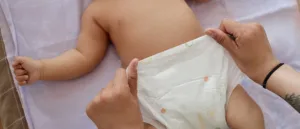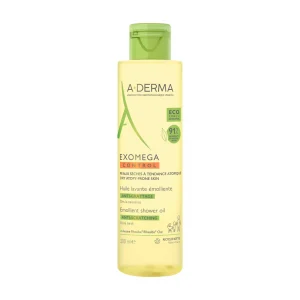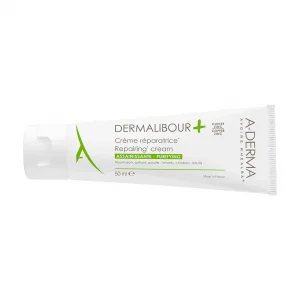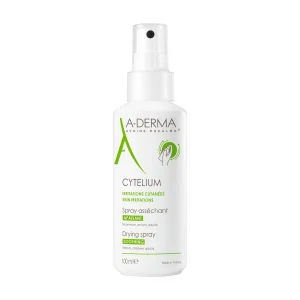
Parenthood is a wonderful adventure filled with moments of joy and wonder. Yet amidst the laughter and cuddles, there can be challenges, like the dreaded diaper rash. For parents, seeing their child uncomfortable and distressed because of this common skin irritation can be heartbreaking.
So, dear parents, in this article from The Dermo Lab and in collaboration with the pediatrician Dr. Mohamed Nabil, we’ll explore the causes, discover practical solutions, and adopt preventive strategies to say goodbye to diaper rash problems and ensure your baby’s well-being and smiles.
What causes diaper rash?
According to Dr. Mohamed Nabil, diaper rash is generally caused by prolonged exposure to moisture, friction, rubbing, or sensitivity to diaper materials. Yeast or bacterial infections can also be a factor. The prevalence of diaper rash is high in infants and toddlers, with the majority suffering from it at one time or another.
Let’s look at all the causes in detail:
1- Prolonged exposure to moisture: Keeping a diaper wet or soiled for an extended period of time can lead to skin irritation. Moisture softens the skin, making it more susceptible to friction and irritation.
2- Friction and irritation: Dr. Mohamed Nabil explains that friction is caused by the diaper rubbing against the skin, resulting in additional friction and irritation. These factors create a favorable environment for the development of diaper rash, hence the importance of keeping the diaper area clean and dry.
3- Irritants in diapers or products: Aggressive chemicals, perfumes, or certain materials present in diapers, wipes, detergents, or lotions can trigger skin sensitivity or allergic reactions.
4- Yeast or bacterial infections: Fungal infections, particularly yeasts known as Candida, can thrive in warm, humid environments and cause skin rashes. Bacterial infections can also contribute to diaper rash, although more rarely.
Diaper rash is widespread in infants and young children, with varying degrees of severity. It is estimated that between 7% and 35% of infants suffer from diaper rash at some time during their diaper-wearing years. While most cases are mild and disappear with simple interventions, persistent or severe erythema may require medical consultation to rule out infections or other underlying conditions.
Dr. Mohamed Nabil adds that common symptoms of diaper rash include redness, irritation, and discomfort in the diaper area. The skin may be chapped or bumpy. To differentiate diaper rash from other conditions, parents should look for a rash that occurs mainly in the diaper area and responds to diaper rash treatments. If in doubt, consult a pediatrician.
Are there factors that make some babies more prone to diaper rash than others?
Dr. Mohamed Nabil points out that several factors can make babies more prone to diaper rash. These include sensitive skin, frequent bowel movements, the introduction of new foods, antibiotics (which can lead to yeast overgrowth), and diapers that are too tight. In addition, if parents don’t change diapers promptly, the risk can increase. As each baby is unique, the causes of diaper rash can vary.
What are diaper rash relief strategies?
Diaper rash relief strategies aim to ease discomfort, promote healing, and prevent further irritation. Here are some effective strategies to relieve diaper rash:
1- Frequent diaper changes: Change wet or soiled diapers promptly to reduce prolonged exposure to moisture and minimize skin irritation.
2- Gentle cleansing: Use lukewarm water and a soft cloth or gentle unscented wipes to clean the diaper area at each change. Avoid using strong soaps, and wipes containing alcohol or scented products, which can further irritate sensitive skin.
Pamper your baby’s skin with the following emollient cleansing oil, whose soothing formula is rich in moisturizing agents and Rhealba oat extract. Using this cleansing gel will protect your baby’s skin from drying out and soothe irritation.
A-Derma Exomega Control Emollient Shower Oil
3- Air time: Allow the baby’s skin to breathe by offering diaper-free periods. Place the baby on a soft, absorbent surface to prevent accidents and promote healing.
4- Protective creams or ointments: Apply a thick layer of diaper rash cream or ointment containing zinc oxide or petroleum jelly to create a protective barrier between the skin and moisture. These products promote healing and prevent further irritation.
Our picks:
A-Derma Dermalibour+ Repairing Cream
This cream soothes, repairs and purifies irritated skin prone to redness, itching, tightness and flaking, or damaged skin.
A-Derma Cytelium Drying Spray
In case of oozing, we recommend the following spray to dry and soothe irritated skin prone to maceration without staining. It dries, softens and absorbs!
5- Avoid irritants: Be careful not to use diapers, wipes, lotions, or detergents containing harsh chemicals or fragrances that could exacerbate the rash. Opt for gentle, hypoallergenic products suited to babies’ sensitive skin.
6- Oatmeal baths: A soothing oatmeal bath can help relieve discomfort and reduce inflammation. Adding colloidal oatmeal to the bath water can soothe irritated skin.
7- Pat dry, don’t rub: After cleansing the diaper area, gently pat dry with a soft towel rather than rubbing, which can further irritate sensitive skin.
8- Loose-fitting diapers and clothing: Use diapers that fit snugly, but not too tightly, to allow good air circulation and reduce chafing. Dress your baby in loose-fitting, breathable clothing.
9- Hydrocortisone cream (under medical supervision): In some cases, a pediatrician may recommend a low-dose hydrocortisone cream to reduce inflammation and itching. This cream should only be used under professional supervision.
10- Consult a healthcare professional: If the rash persists, worsens, or shows signs of infection (such as pus, blisters, or open sores), seek advice from a pediatrician or healthcare provider. They’ll be able to offer you recommendations or specific treatments tailored to your baby’s needs.
Remember, while these strategies can bring relief, prevention is essential. Regular hygiene practices, diaper-free periods, and the use of gentle products can significantly reduce the onset and severity of diaper rash.
Conclusion
Dear parents, although a diaper rash may seem like an unwelcome guest, with knowledge and proactive care, you can show it the door. With these strategies and your attentive care, say goodbye to discomfort and enjoy the laughter and joy of your baby’s well-being.
Remember that every redness or irritation is a temporary hindrance and that by caring for your child’s skin with love and patience, you’re not only promoting his or her comfort but also a bond that will last a lifetime.
Last Updated on February 16, 2024












